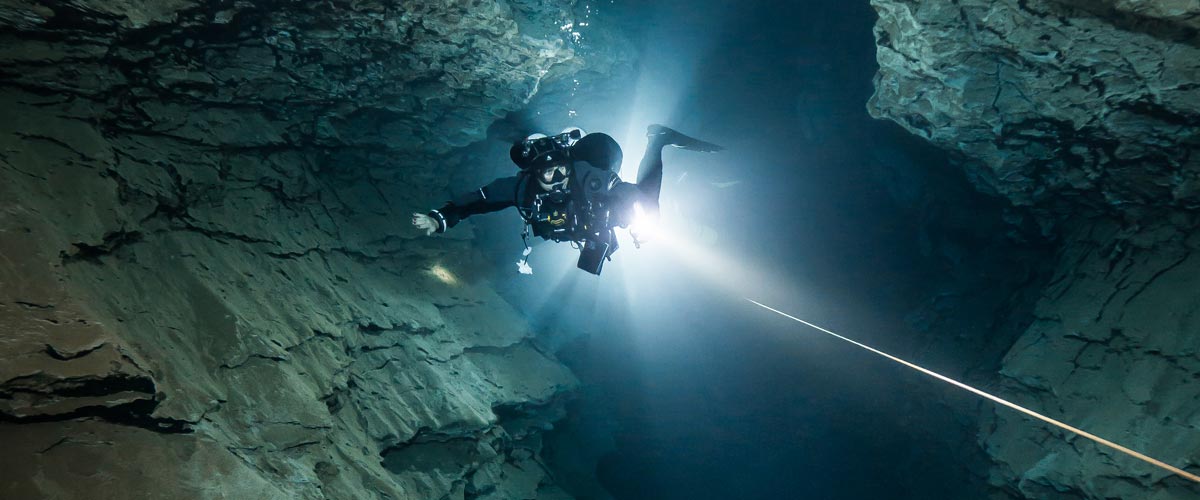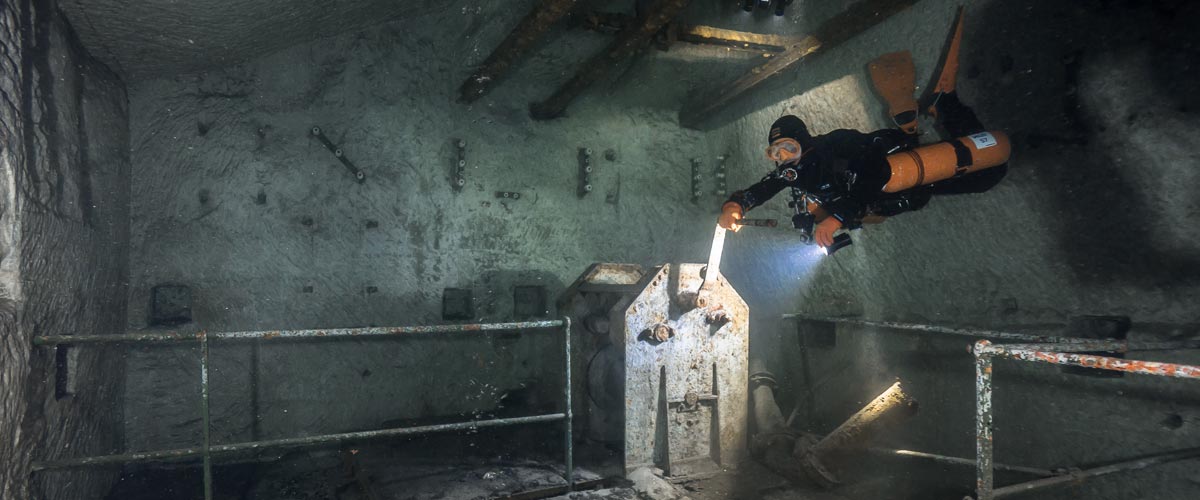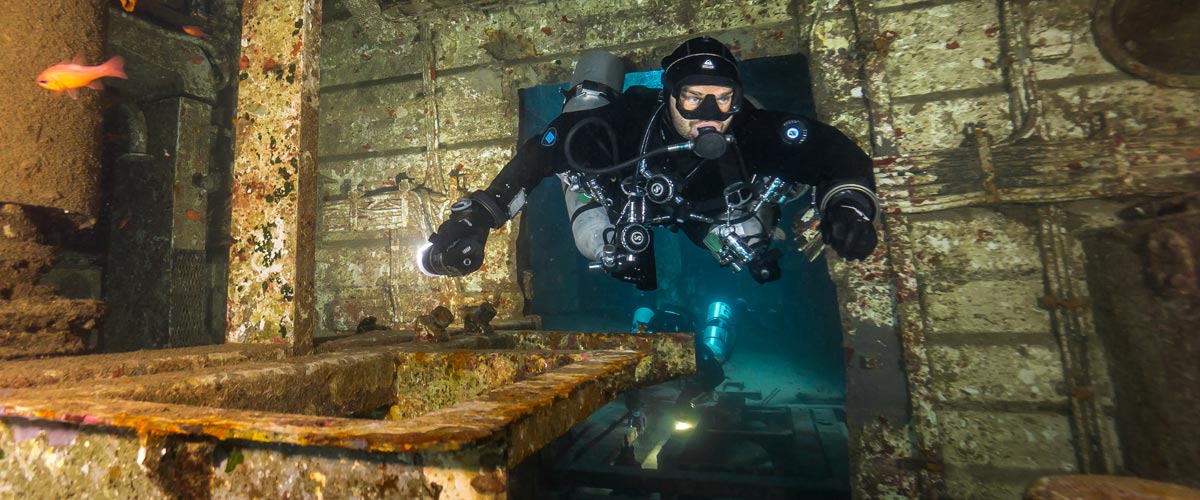Dive Training Blogs
Things that sting… and how to avoid them!
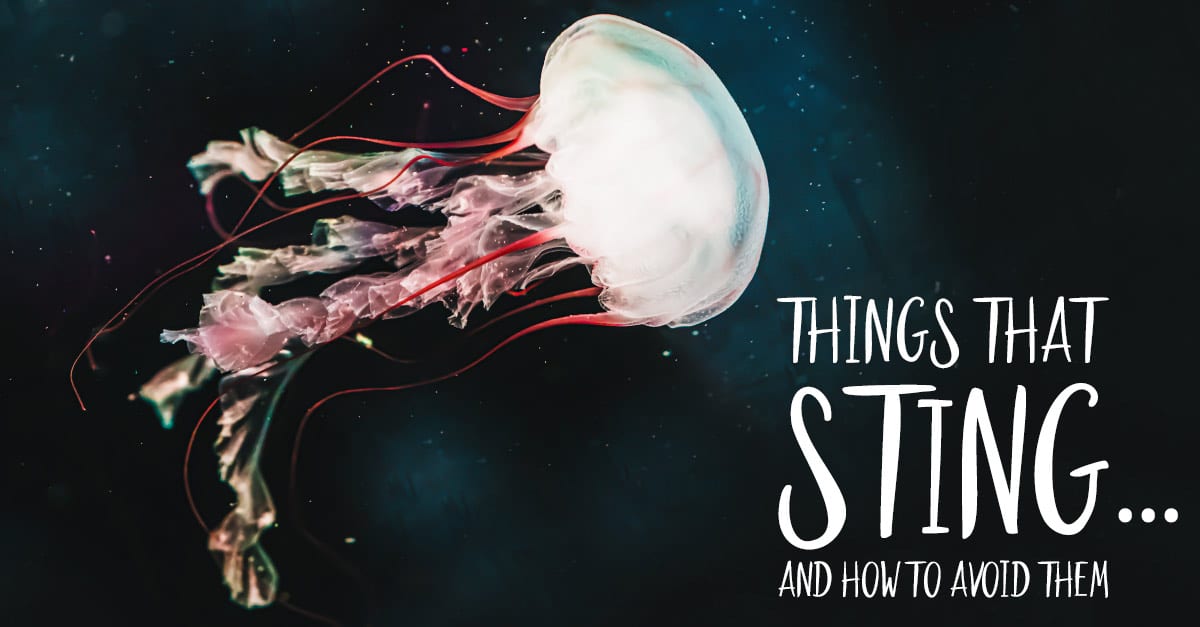
By Gemma Smith
Here be Dragons warned medieval maps, as land gave way to uncharted oceans and their mysterious inhabitants. Well, as it turns out there are dragons in the seas, but they are small and loveable (Phyllopteryx taeniolatus). No threat at all! There are however creatures who can give divers, snorkelers, swimmers and surfers painful and, at times, fatal stings. Here are some of them to look out for… but remember, these animals are only defending themselves or trying to catch their dinner!
Stingray
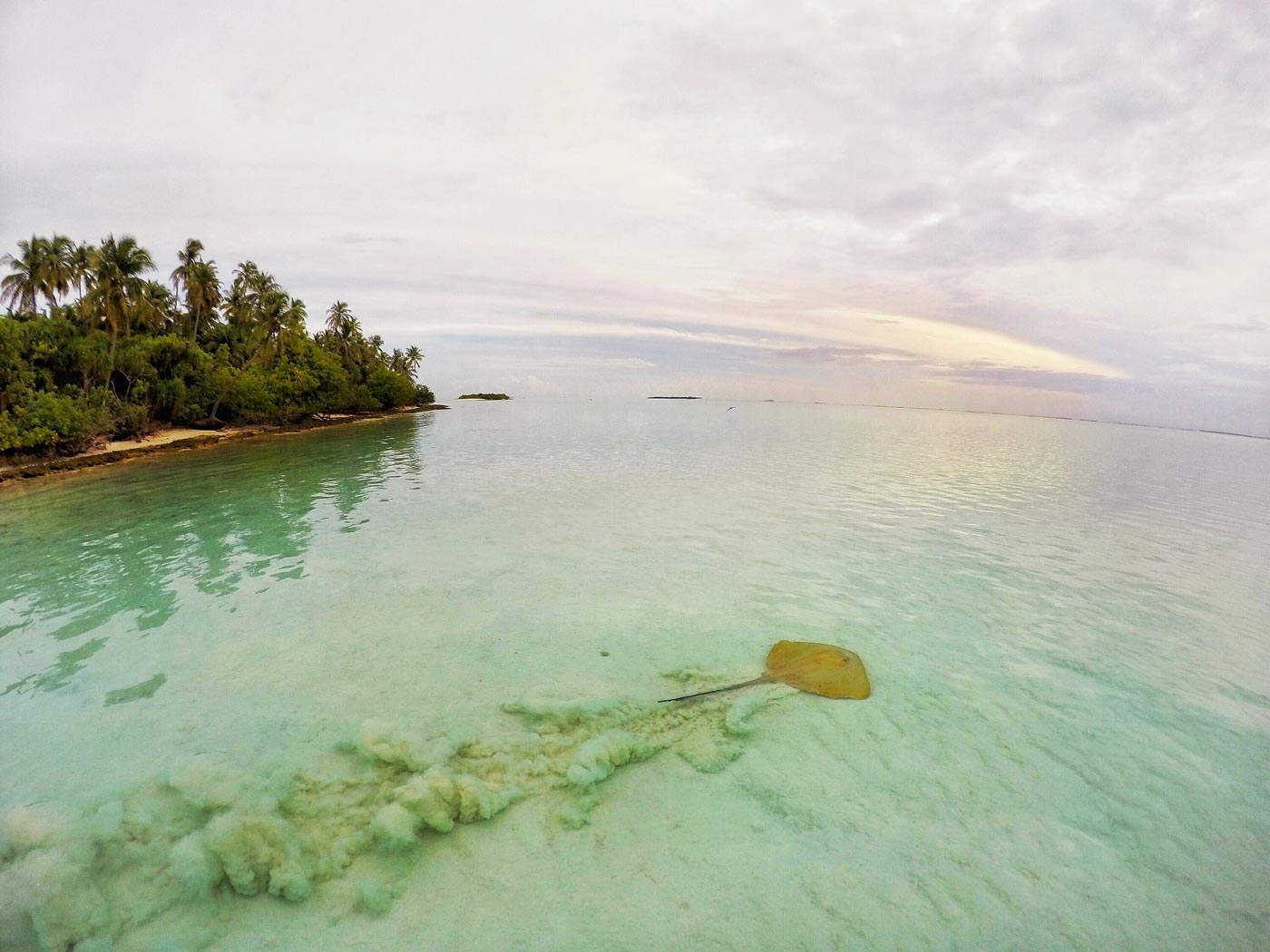
The death of Australian naturalist Steve Irwin from a stingray made international headlines in 2006. Yet it was only the second recorded stingray-induced death in Australian waters since 1945. Stingrays are not naturally aggressive but like any animal will react if frightened. Often hiding in sand to await prey, the ‘stingray shuffle’ (sliding your feet along the sand rather than stepping down hard) can alert the animals to your presence and allow them to take avoiding action.
Stingrays are common in coastal tropical and subtropical marine waters throughout the world. Some species live in the deep ocean, and there are also river stingrays. They have a venomous barb on the end of their tail which they use for defense
Stingray injuries are rarely fatal. In Steve Irwin’s infamous case, the stinger penetrated his chest cavity causing massive trauma. Nonetheless, stings are serious. They can cause pain, bleeding, nausea, weakness, and fainting. Embedded spines are best left to medical professionals to remove. This is in case the barb breaks off in the wound, which may lead to infection.
First aid includes cleaning the wound and immersing the injury in hot (40° C/104° F) water if possible for at least 30 minutes. Remember: Always seek medical attention for a stingray sting.
Weever Fish
This small fish which rests in sandy shallows near the shore punches, literally, above its weight! Its toxic dorsal spines produce acute pain if stepped on. Other symptoms are nausea, headache, and even abdominal cramps. Death is extremely rare.
As with other such injuries don’t remove embedded spines with bare hands. Always wear gloves or use tweezers! To reduce pain, immerse the foot in hot water (as above with stingray injuries). These small but potent fish live in the coastal waters of the Atlantic, North Sea, and the Mediterranean.
Jellyfish
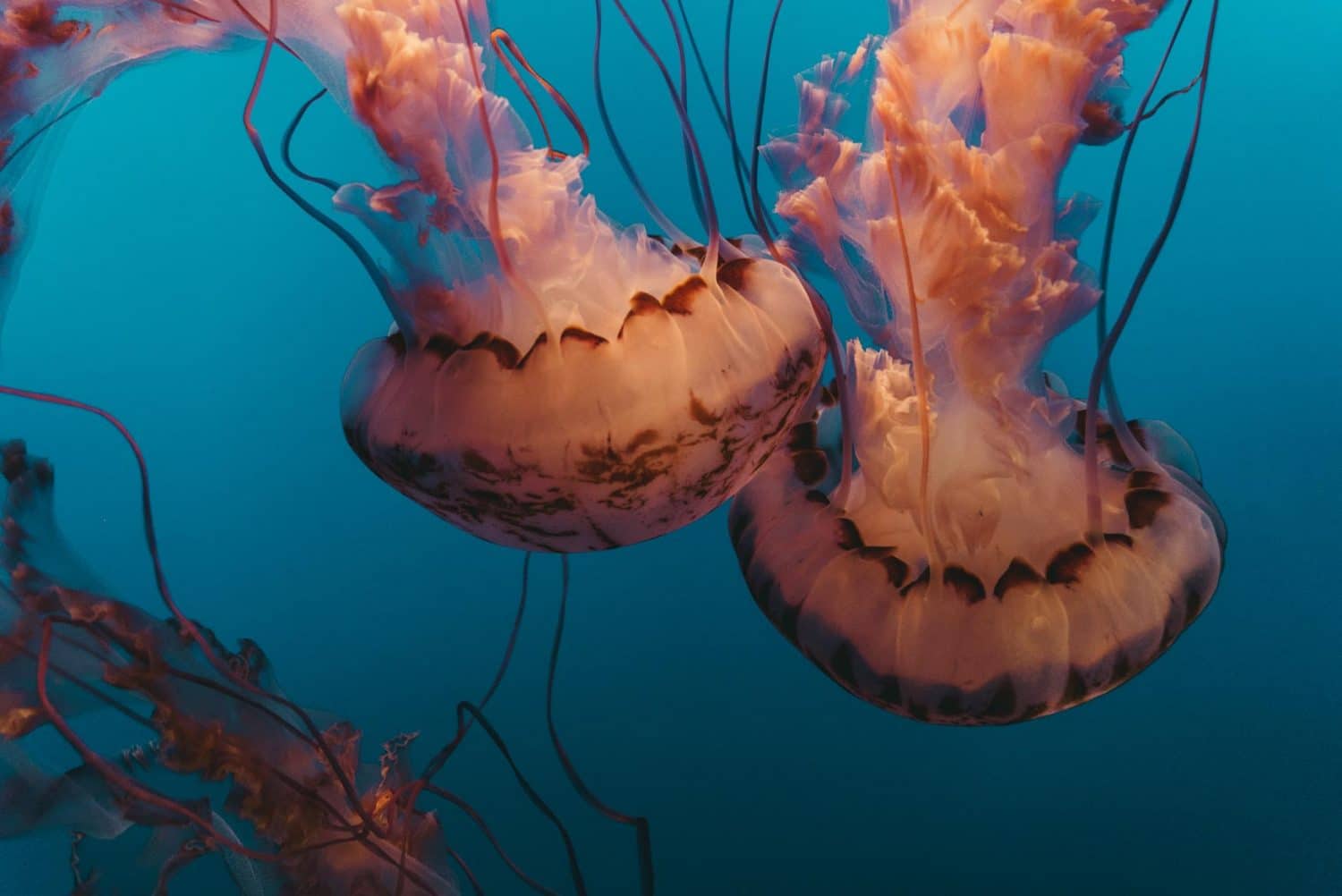
These sea creatures have tentacles covered with individual stingers called nematocysts. Jellyfish generally fire their darts into prey, but swimmers, divers, and snorkelers can be stung by physical contact. Swarms of jellyfish can also wash up on beaches.
in January 2019 about 13,000 stings were recorded on Queensland beaches from a massive influx of bluebottle jellyfish!
In May 2017 more than 300 Barrel jellyfish washed up on a beach in Wales.
So long as the stinger in the animals is still hydrated it can fire off into unsuspecting beachcombers who touch the animals. Always remove any tentacles using gloves or tweezers and, to reduce pain, immerse the affected area in hot water.
Most stings from jellyfish cause rashes and/or blisters. More acute reactions can be headaches or even chest pain. But stings from the Australian Box jellyfish and the Portuguese Man-of-War can be fatal. These need immediate emergency medical attention.
Be prepared to perform CPR in case of respiratory failure. Sea Wasp stings may prove fatal in as little as three minutes. To be safe, do your research before diving: avoid known Box Jellyfish habitats and minimize the amount of uncovered skin.
Blue-Ringed Octopus
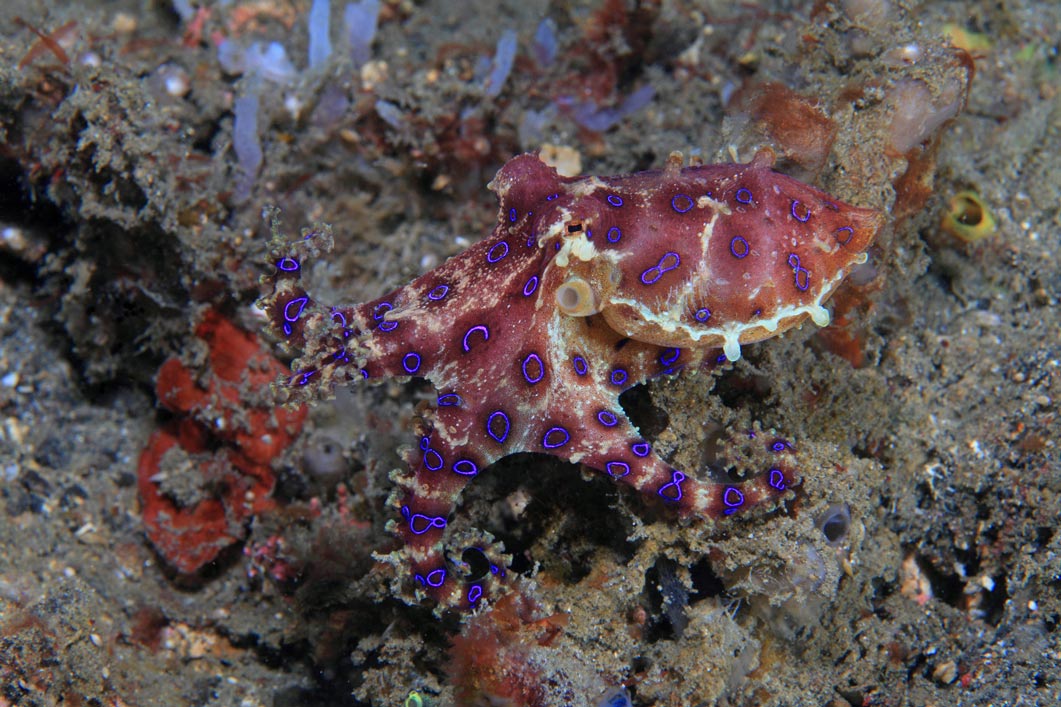
This small (12-20 cm/5-8 in) shy little octopus with its distinctive blue rings has enough venom to paralyze ten adult humans according to a University of Sydney study. Found in tide pools and coral reefs in the Pacific and Indian Oceans, it spends much of its time hiding in small crevices or abandoned shells.
If threatened, its bite is tiny and relatively painless. The venom however can cause tingling of the lips and tongue, followed by difficulty swallowing, dizziness, and headache. This can progress to paralysis and eventual respiratory distress or failure. The victim is aware something is wrong but can do nothing.
If bitten by a Blue-ringed octopus always seek medical attention. First aid is pressure on the wound (‘pressure immobilization technique’) and artificial respiration (CPR) if there are signs of respiratory failure. Hospital treatment consists of putting the victim on a medical ventilator until the patient’s own system can metabolize and secrete the venom. Luckily there are few reported deaths. With timely medical help, full recovery is the norm.
Cone snails
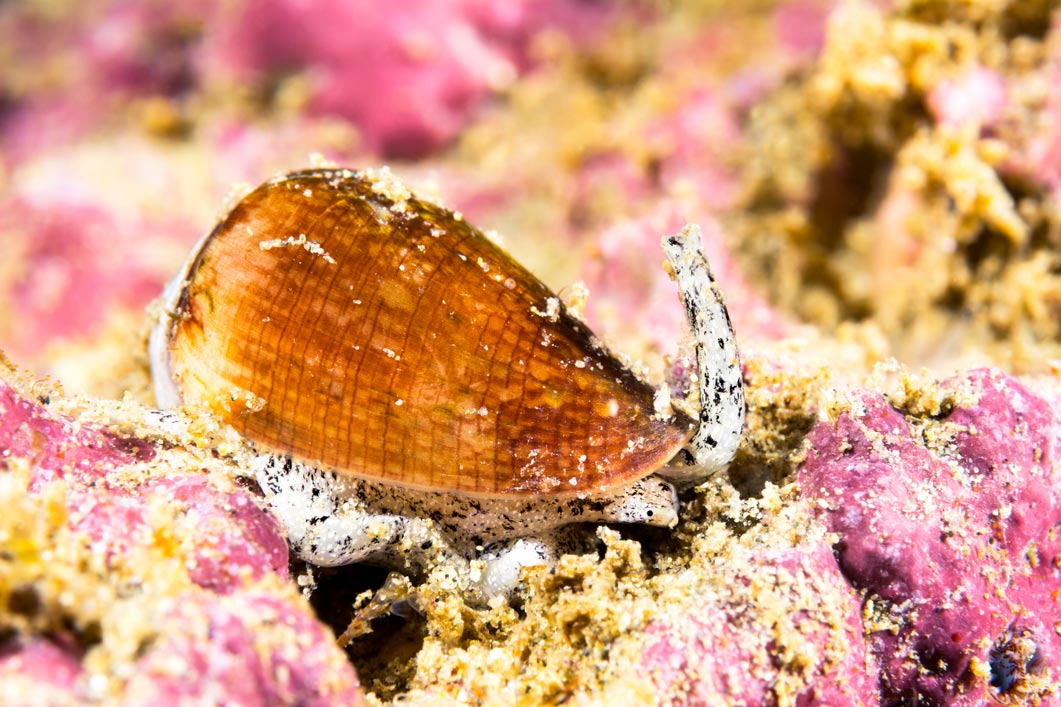
There are about 600 species of cone snail. They can be found in the Indian and Pacific Oceans, the Caribbean and the Red Sea. They live in reefs hiding themselves partially under sandy sediments. They often have beautifully patterned shells, very attractive to collectors.
All cone snails are poisonous to some degree. It is only the larger ones, up to 23 cm/9 in long, which we need to worry about. Every snail has a venom-injecting ‘tooth’; someone picks up a cone snail it responds by ‘biting’ the offender with its harpoon-like tooth.
In the case of the larger snails this tooth can sometimes penetrate gloves or wetsuits. This ‘bite’ can cause mild to moderate pain. In more serious instances numbness, blurred visions and paralysis can occur. Paralysis can sometimes lead to respiratory failure. Symptoms can appear immediately or may take a few days.
Always seek medical attention in case of a cone snail sting. First aid measures can include application of heat (such as soaking the affected area in hot water) for pain relief. Also use of the ‘pressure immobilization technique’ can help slow progression of the toxin. Watch out for symptoms appearing in succeeding days.
Finally
These marine creatures are not generally aggressive but will react if frightened, so some general rules:
- Don’t touch them. Even dead jellyfish can sting!
- Be careful where you put your hands; someone may be lurking under a rock or in a crevice or an abandoned sea shell.
- If walking in shallow water do the ‘stingray shuffle’! This gives anything hidden in the sand time to get out of the way. After all, they don’t want to waste their venom on you!
- The use of vinegar on a sting is controversial but recent research from the University of Hawaii on Man of War stings has shown that rinsing the area with household vinegar can halt discharge of more venom.
- Don’t pee on a sting. It doesn’t help!
- Don’t touch spines with bare hands
- Gently clean the wound but don’t scrub, close, or cover it
- Remember the pressure immobilization technique, and use if recommended (see below)
- Always seek medical advice if there is evidence of chest pain, difficulty in breathing or numbness, or if you are in any way concerned about the injury. Minor injuries might mask a bigger problem. Better safe than sorry!
Pressure Immobilization Technique
This technique was developed in the 1970s by an Australian medical researcher, Struan Sutherland. It was originally designed to be used on certain snake and spider bite injuries. Its purpose is to contain the spread of venom from the affected area, and prevent the venom circulating to reach the vital organs.
It is not suitable for all bites/stings whether for snakes, spiders or other creatures. It is recommended for blue-ringed octopus bites and cone snail stings. Check DAN or another reputable site to refresh your memory if diving in waters where you are likely to meet these creatures.
The procedure is generally to:
- Use an elasticated bandage, if available, to wrap the affected limb and apply firm pressure. Clothing such as a long-sleeved shirt or pantyhose can be used if nothing else is available.
- Begin by bandaging a couple of inches above the bite site and then downwards over and past the bite site to the hand or foot.
- The bandage should be snug but should not impede blood circulation.
- The limb must be kept as immobile as possible as movement will encourage blood flow.
- Splint the limb if possible or use a sling on upper limbs to further immobilize the patient.
- Above all, seek medical help!
These are a few of the problems you may encounter while diving, snorkeling, or other water-based activities. It is important to always keep your First Aid knowledge up to date, and to carry basic First Aid equipment whenever you dive. Remember, the oceans are a marvelous place full of amazing and unique creatures. Respect them, and your visits to their world will be a delight and not a disaster.
![]() To find out more about International Training, visit www.tdisdi.com.
To find out more about International Training, visit www.tdisdi.com.
Blogs
Intro to Tech: What is it about?
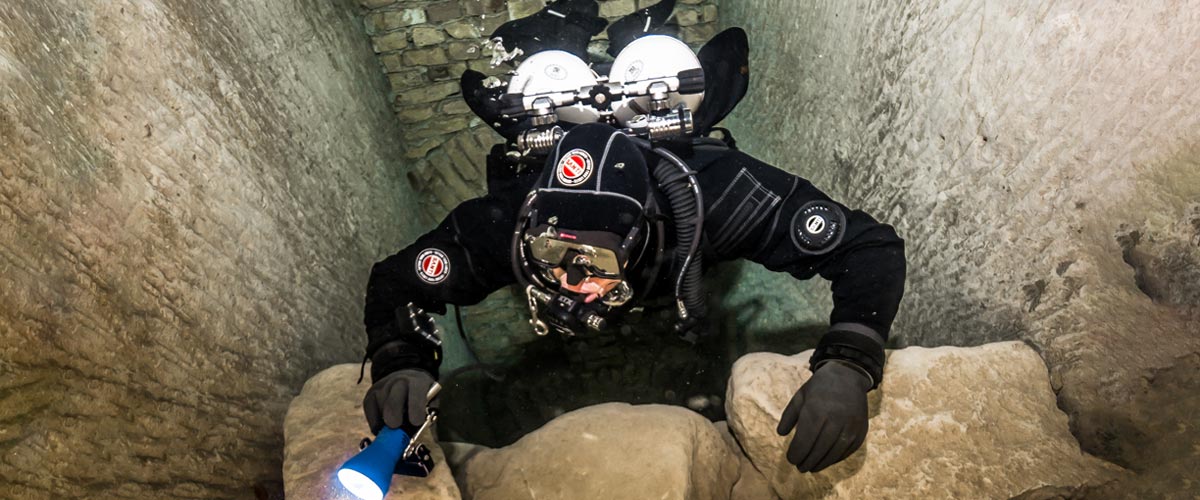
Article by José Pablo Mir
Pictures by Cezary Abramowski
The world of technical diving is exciting. It opens the door to new sites, depths, and bottom times. More importantly, it opens our minds to a new way of planning, facing, and experiencing dives, even those not purely technical.
Becoming a technical diver is a process, and like in other aspects of life, we should find the proper entry point that suits us best based on our knowledge and experience. The Introduction to Technical Diving course from TDI -the world’s largest and most recognized technical diving teaching organization- is the best option for divers who have yet to gain experience in the fundamental aspects of this new practice. The course’s content and its embrace of new techniques and technologies make it possible to acquire a solid foundation to learn and gain experience in this practice properly.
Becoming a technical diver is not something that happens overnight, whether deciding to become one or receiving a certification card stating we are now technical divers. It is a slow process extending farther away than any introductory course. It requires effort and dedication. But it will bring us satisfaction from day one -or two.
It is a matter of mentality
First, we must understand and accept that technical diving, involving greater depths, longer bottom times, exotic gases, virtual or real ceilings, and more, comes with higher levels of risk than the sport diving we have been practicing until now.
Although this discussion usually starts with a warning about risks, as I’ve done in the previous sentence, our practice is not a game of chance.
Technical diving is a rational activity that requires maturity and good judgment, and we will put everything into ensuring that each dive is a successful one -meaning we return from it safe and sound. With this understanding, we will strive to establish a mental attitude more aligned with our practice and its realities.
This new “technical diver” mindset we will develop will lead us to be more cautious in our executions, more analytical in our plans, more rational in our strategies, and more detailed in our procedures.
Experience will keep teaching us to know ourselves better, to keep our anxiety and other emotions under control, and to manage our impulses. Over time, our senses will sharpen, and we will be more attentive to the particulars of the situation we find ourselves in.
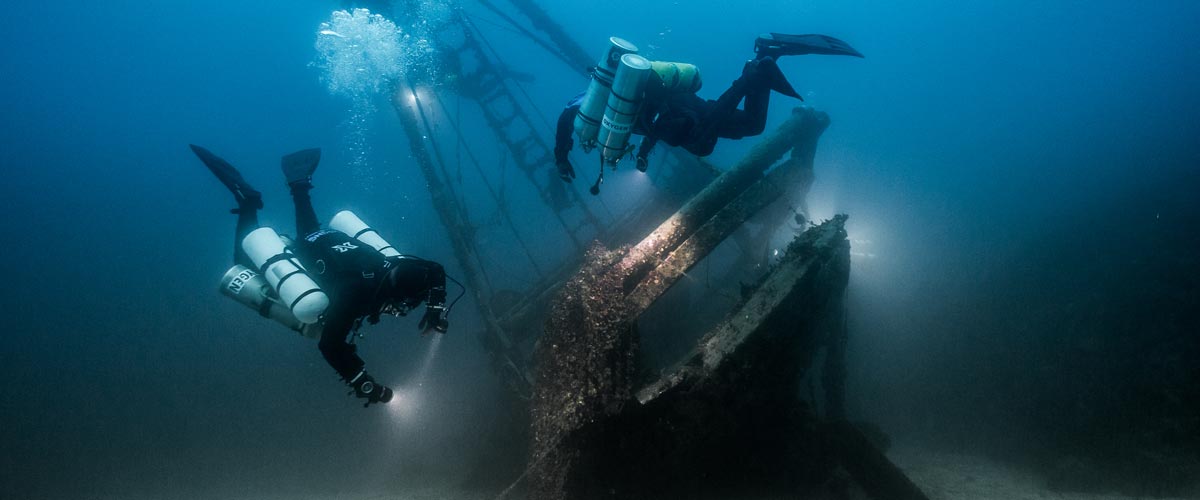
Strategies and procedures
Our strategies, those broad guiding lines tracing the path to follow, from how to approach planning to where, with what, and how we are willing to get there, will be more specific and more practical. Not because they magically become so, but because we will consciously and deliberately frame them that way.
We will establish clear, concise, and realistic procedures. Not only for the undesirable situations that may present themselves but also for those that are part of our dive objectives.
Even though, as technical divers, we often use equipment different from what we were previously accustomed to, it is essential to note that the gear does not make the diver. In a way, we could consider such equipment as the necessary tools to implement what our goal seeks to achieve, according to our strategies and procedures.
Technique plays an important role
We must put our greatest effort into learning and perfecting the different techniques we will be acquiring. Buoyancy, trim, propulsion, cylinder handling, deploying DSMBs and lift bags, valve drills, and more are essential skills we must begin to master to progress in our art. What we cannot do, when we need to do it, can harm us.
Our techniques must be effective and achieve the purpose for which they were devised. But they must also be efficient and require the least resources possible, including the time they take and the effort they demand. Effectiveness and efficiency will prevail over beauty and other considerations that may come to mind, although none of them should be mutually exclusive. A technique executed efficiently and effectively tends to have an inherent beauty.
Refining techniques is a lifelong mission. Some of them will be easy to master from the go; others, on the other hand, will be our life mission and will require many repetitions just to resemble the idea we have in mind of how they should be executed.
We must consider the environment
Our learning, the needs and musts of the practice we engage in, the experience we gradually gain, our strategies and procedures, and even our equipment and tools change with the environment.
Diving in the ocean, everything about us must be suitable for ocean dives. Conditions there rarely emulate those found in a pool, lake, or river. Variable winds and currents, greater depths, visibility conditions, other divers with uncertain skills around us, marine life, maritime traffic, distance from the coast, and many other factors add complexity and uncertainty.
It is never necessary to master the pool on the first day, but planning and aspiring to gradually cope with the ocean’s conditions is essential.
The cost of good training
We are aware that our resources are often scarce in relation to the possibilities of use we could give them if they were not. To a greater or lesser extent, we are part of the economic reality in which we are embedded.
Fortunately, the cost of good technical diver training is not an entry barrier. Comparing training and equipment costs, we see that the former are generally lower. Yes, lower cost for personalized service, essential to our future
performance and safety, than for a series of mass-produced products that are mere, albeit necessary, tools for an end.
The value of good training
The value of the training we received encompasses a range of characteristics, from emotional and methodological to technical and technological. TDI and its Introduction to Technical Diving course offer a deep and modern approach, with a teaching strategy that aims to create thinking divers, not merely obedient ones.
As technical divers, our knowledge is our primary tool. In this type of activity, what we don’t know can harm us.
Is this course optional?
Unfortunately, the fact that this Introduction to Technical Diving course is not a prerequisite for any subsequent training is an invitation to consider it optional. And we all know what usually happens to “optional” under budget constraints.
However, this course should be seen as optional only by those divers who are somehow familiar with the use of technical equipment, who have a mindset more in line with the requirements of this type of diving, who plan and execute the dives the proper “technical” way, who know their gas consumption rate, who are not intimidated by non-decompression tables, who feel comfortable using their dive computers, and know the techniques and have at least an acceptable level of buoyancy, positioning, and propulsion. Those can go straight to a more advanced training course, such as TDI’s Advanced Nitrox.
We must ask ourselves whether or not we are in that group.
Remember our goal: to have fun
Recreational diving is our passion. Jumping into the water carrying heavy equipment and having properly dotted our I’s and crossed our T’s have only one ultimate goal: fun. This is the activity we have chosen as a hobby. We must enjoy it; it must give us pleasure and make us vibrate.
Having a good time is not optional!
Blogs
Four opportunities to go pro in 2024 with Dive Friends Bonaire
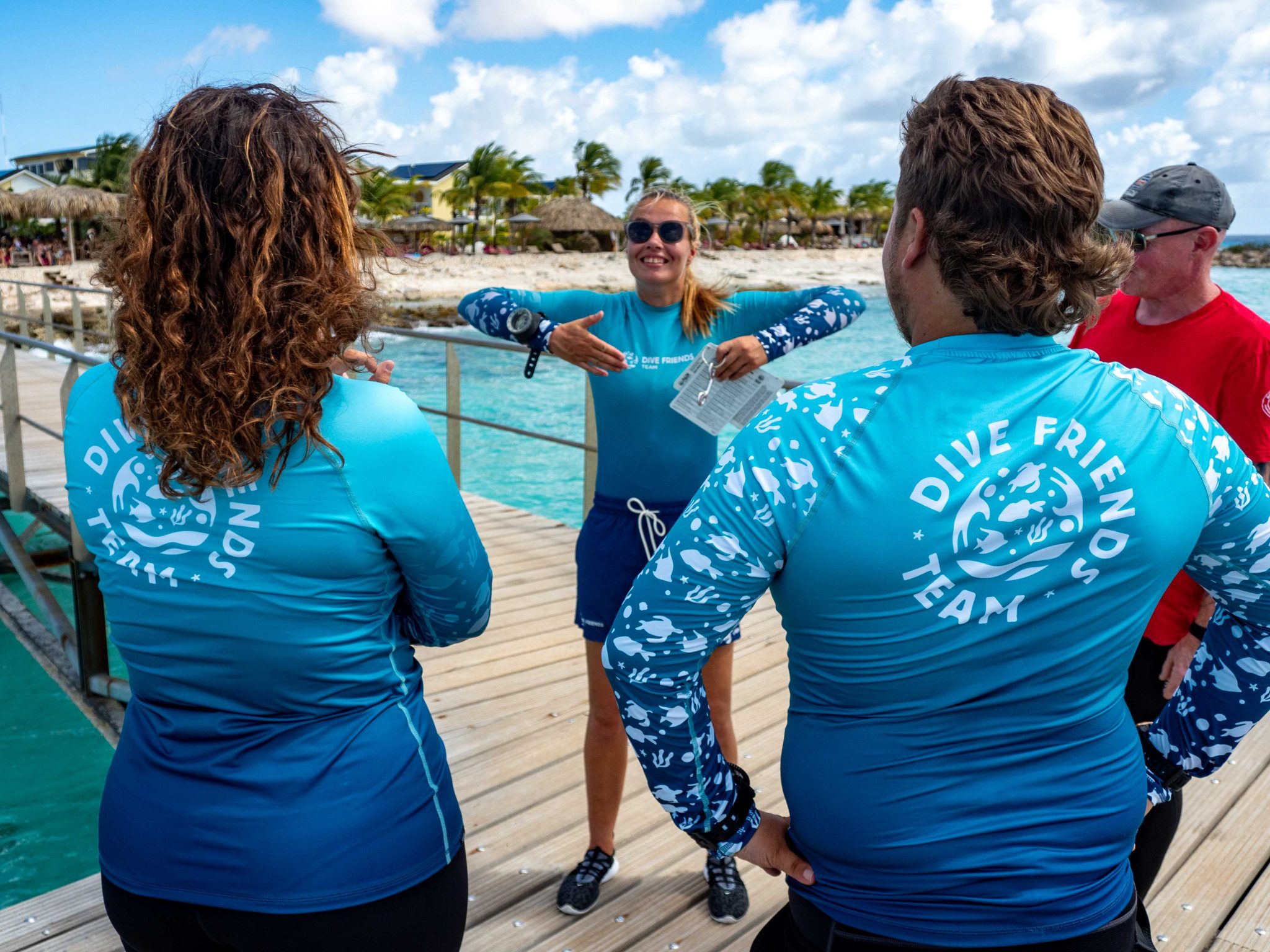
Dive Friends teaches the Instructor Development Course (IDC) several times a year to students who are eager to share their passion for diving with the world.
Dive Friends is known for the personal approach throughout the course. Their in-house course director will lead the students through every essential step, mentoring them to achieve their fullest potential as a dive instructor.
Applications for the following IDC start dates are now open:
- 12 April
- 5 July,
- 20 September
- 29 November
Partnership with Casita Palma
If the student opts for the IDC-Deluxe or IDC-Supreme package, their accommodation will be arranged for them at Casita Palma. This small and quiet resort is within walking distance from Dive Friends Bonaire’s main dive shop location and has everything you need to relax after an intense day of IDC training. Breakfast is included, so the student will always be fuelled and ready for their day.
Contact Dive Friends Bonaire’s Course Director Eddy for more information: coursedirector@divefriendsbonaire.com.
-

 News3 months ago
News3 months agoHone your underwater photography skills with Alphamarine Photography at Red Sea Diving Safari in March
-

 News3 months ago
News3 months agoCapturing Critters in Lembeh Underwater Photography Workshop 2024: Event Roundup
-

 Marine Life & Conservation Blogs3 months ago
Marine Life & Conservation Blogs3 months agoCreature Feature: Swell Sharks
-

 Blogs2 months ago
Blogs2 months agoMurex Resorts: Passport to Paradise!
-

 Blogs2 months ago
Blogs2 months agoDiver Discovering Whale Skeletons Beneath Ice Judged World’s Best Underwater Photograph
-

 Gear Reviews2 weeks ago
Gear Reviews2 weeks agoGEAR REVIEW – Revolutionising Diving Comfort: The Sharkskin T2 Chillproof Suit
-

 Marine Life & Conservation2 months ago
Marine Life & Conservation2 months agoSave the Manatee Club launches brand new webcams at Silver Springs State Park, Florida
-

 Gear Reviews3 months ago
Gear Reviews3 months agoGear Review: Oceanic+ Dive Housing for iPhone















